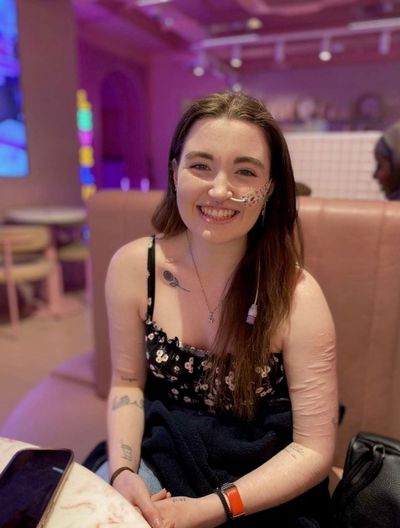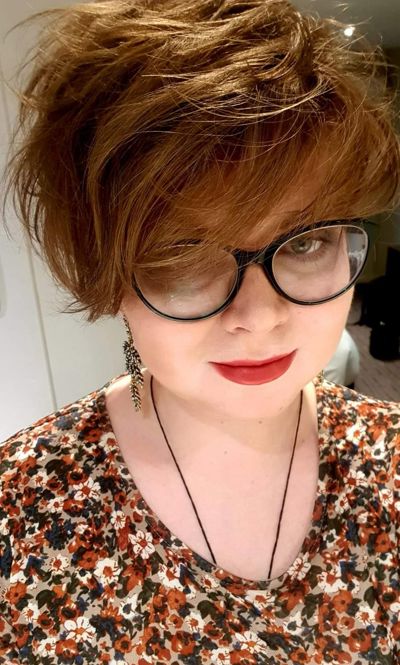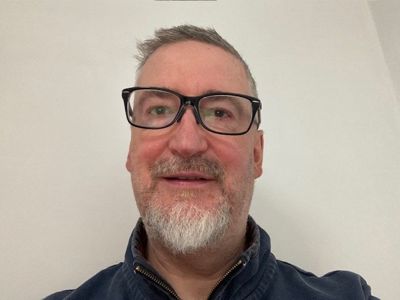“Life can and will be worth living” – Aimee’s story
07/03/2025
After experiencing childhood abuse, Aimee was diagnosed with EUPD (emotionally unstable personality disorder) and C-PTSD (complex post-traumatic stress disorder). She reflects on the misunderstanding around her conditions and how to remain hopeful.
My challenges with mental health started when I was only 11 years old. At the time, I was doing well. I had a small group of friends, hobbies I loved and had just started at secondary school. From the outside I had a good life but behind closed doors, I started to notice that what was happening at home wasn’t what all of my friends were experiencing.
I experienced multiple forms of abuse throughout my entire childhood which I thought was normal. I remember one day talking to my school counsellor about something that had happened the night prior and I have never forgotten the look of horror on her face.
I was first seen by CAMHS (Child and Adolescent Mental Health Services) when I was 12 following my first suicide attempt. I felt completely alone and so out of place. Life didn’t feel worth living to me.
-
There is so much stigma around EUPD, that all people diagnosed with it are dangerous or angry
At CAMHS, I was originally diagnosed with generalised anxiety disorder and treatment resistant depression. I was told there was nothing else they could do for me and after trying many medications and treatments, they didn’t know what else to do.
At 15, I found myself once again in hospital, but this time it was different. They finally listened to me and made the abuser leave. I wasn’t allowed out of the hospital until he left my house. Court orders were put in place and I was eventually discharged, safe from him and under a home treatment team for 15 weeks. They referred me to DBT (dialectical behavioural therapy), which is where my life changed.
When I had my pre-assessment at DBT, my therapist immediately made me feel safe and listened to. She told me I can get better and that this wasn’t treatment resistant, but just that I’d never had the right treatment. For the first time ever, she gave me hope.
I saw the psychiatrist and was told I had EUPD and C-PTSD. This made so much sense to me as I’d been experiencing what I now know were flashbacks, severe mood swings, impulsiveness and much more.
-
My only hope is that I can help other people to see that their life isn’t over
There is so much stigma around EUPD, that all people diagnosed with it are dangerous or angry, and we must walk on eggshells around them. But this is not always true. Of course, anger and outbursts are common in EUPD, but every person is different and every person will experience this different. Personally, I’ve never struggled with anger, but getting that diagnosis changed quite a few people’s views of me. This only added to my ongoing issues.
I was under DBT for a little longer than two years. During this time I also completed prolonged exposure work for my trauma and was finally discharged in 2022. Wanting to live and being happy I survived, I started raising awareness for these conditions on social media. I believe it’s important to raise awareness as these conditions are so poorly understood, even by professionals.
My life is so much better now. I still live with EUPD and C-PTSD, but my symptoms are less severe and more manageable. I live a DBT lifestyle, where I can use my skills on a day-to-day basis whenever I need to. I’ve even gone into my old DBT building, with my old therapist, to speak to young people currently going through treatment about my experiences.
It would’ve been life changing to tell the 15 year old me that people out there can live with these conditions; for it to not be the most horrific, unbearable life. My only hope is that I can help other people to see that their life isn’t over. just because of a few words on a piece of paper, and that life can and will be worth living.



